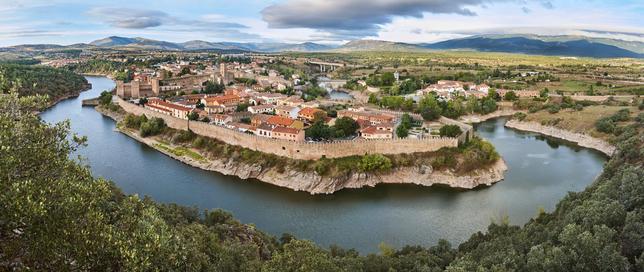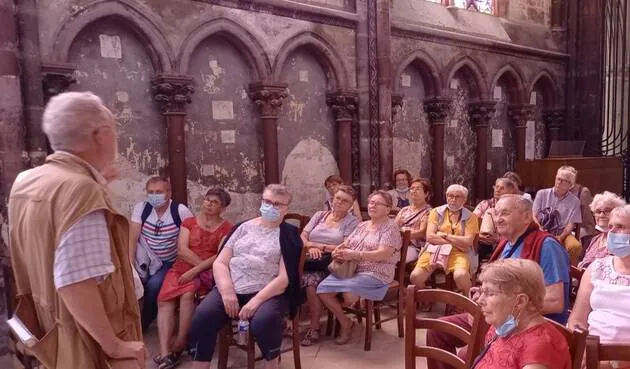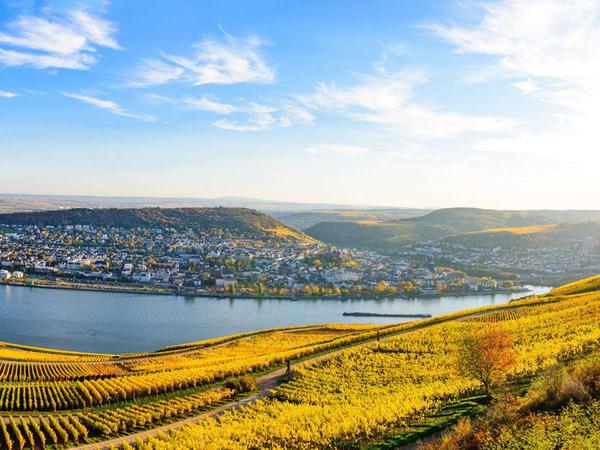Madrid
These ten points of Madrid steeped in history are a good destination to discover in this final stretch of the Christmas holidays
- created
- Last update
We open 2022 and, in this final stretch of the Christmas holidays, with the tickets for the Three Kings Parade in your pocket, you feel like escaping. Rediscover enclaves of the Community of Madrid, some of the 179 municipalities in the region, their traditions and their history. Both for locals and for visitors from outside. These are ten proposals From Patones and Cadalso de los Vidrios to Alcalá de Henares and Aranjuez. Or Chinchón, on everyone's lips lately due to the recent filming of Wes Anderson.
1.- Patones from above
Must to see? Its slate houses make it a mandatory stop on the route through the black towns of Spain. A charming municipality to unwind while strolling through its cobbled streets and admiring the slate houses decorated with flowers. The hermitage of the Virgen de la Oliva and the old church of San José complete the route.
Where to park in Patones? In Patones de Arriba authorized parking is reserved for residents. Parking is currently allowed before the entrance to the urban center on a service road from Canal de Isabel II up to the prohibited sign, but space is very limited. It is recommended to park the vehicle in Patones de Abajo and walk up the path of the ravine, a journey that takes less than half an hour.
2.- Chinchon
Must to see? Its Plaza Mayor has been declared a Historic-Artistic Site. And it has a lot of history behind it: the square has hosted theater festivals, bullfights, public executions... Its particular architecture immerses us in a space that looks like a comedy corral like Almagro's. It is also necessary to discover the Augustinian Monastery, the Clock Tower and the Lope de Vega Theatre.
What is its liquor famous for? Chinchón anise has been made since the 17th century, always 100% distilled and since then exclusively using matalahúga anise, which gives it the characteristic smell, flavor and finesse of this genuine and traditional product, of which the city of Chinchón is so proud. Anís Chinchón has the distinction of Geographical Denomination, granted by the European Union to certain products with their own and differentiating production methods and tradition.
3.- Buitrago del Lozoya
Must to see? The portal that produces this top ten highlights Buitrago's location as one of its main attractions: "At the foot of the Sierra de Guadarrama is Buitrago de Lozoya, one of the most beautiful towns in Madrid." With a historical secret to discover: Did you know that its wall of Muslim origin is perfectly preserved? “Walking through its medieval streets while contemplating the Clock Tower or the Alcázar is a perfect plan for the weekend. The Lozoya River surrounds the walled area and the Puente del Arrabal rises above it, which gave access to the city center”, highlights Civitatis.
and also nature In addition to a rich monumental heritage, Buitrago has nature. A natural environment that has three recreational areas enabled to receive visitors: those of Riosequillo (with a large natural pool), that of Pinar and that of the Medieval Garden. All this bathed by one of the key rivers for the capital: the Lozoya. A perfect location for a 24-hour or weekend getaway.
4.- Alcala de Henares

Must to see? It is one of the 25 World Heritage cities in Spain, recognized by UNESCO for being the first planned university city in the world, which was founded in the 16th century by Cardinal Cisneros. From the Cathedral to the University, from its Roman remains in Complutum, with the Archaeological Park La Casa de Hippolytus to the Casa de Cervantes or the Colegio de San Ildefonso. A very concentrated walk through history... and one step away from the capital.
A very sweet visit. To end the day nothing better than a sweet. We suggest you visit the convent of the Poor Clares nuns in the Plaza de San Diego, where we start our route. In it, the nuns make artisanal caramelized almonds, which they sell in the same convent through a lathe. If you feel like more sweets, one step away, returning to Calle Mayor, there are several pastry shops where you can try typical Alcalá sweets, such as Costrada or Alcalá rosquillas.
5.- Rascafría
Must to see? On weekends it seems that there is nothing beyond the "good food" along the main street and the Presillas meadow on hot days, joined by the long and pleasant walk through the Finnish Forest. The good thing about the hiking trails in Rascafría and its surroundings is that there are for all levels!
Miñambres Sisters Costume Museum . In addition to the rich collection of clothing from different areas of the Community of Madrid and neighboring regions, another treasure is the Miñambres sisters themselves. They visit you and tell you everything that interests you and more. A "must" in the Sierra de Madrid.
6.- San Lorenzo de El Escorial
Must to see? You cannot miss an excursion to El Escorial. Surely you already know that its imposing monastery is the main attraction of the beautiful town of San Lorenzo de El Escorial, on the slopes of the Sierra de Guadarrama in Madrid, just 53 kilometers from the capital. Considered the Eighth Wonder of the World and declared a World Heritage Site by UNESCO. It was built by order of Felipe II between 1563 and 1584, on the one hand, to commemorate the Battle of San Quintín, and in turn, to be used as the royal pantheon of the Spanish Monarchy.
And it was built very, very quickly. Of the enormous dimensions of the Monastery of El Escorial, it will give you an idea to know that after its construction in the 16th century in a record time of only 21 years, it became the largest building in all of Europe. The two most important rooms of the Escorial Monastery are the historic Pantheon of the Kings and the Library, corners that more than justify a visit to the interior of the monastery.
7.- Aranjuez
Must to see? It is considered one of the most beautiful palaces in Spain, and is characterized by its striking white and red colors on the facade. Also noteworthy on its façade are the statues of the three kings who promoted its construction: Felipe II, Felipe V and Fernando VI. And above all, in addition to seeing the beautiful interiors of the palatial complex, visit the gardens. A unique construction that is also greatly appreciated in these hot times.
And the Tagus... The river has marked the town and has been the cause of the construction of this imposing palace. That is why the Falúas Museum deserves a visit. It shows the boats used by the Royal House on their recreational outings and performances on the Tagus River during their spring visits to Aranjuez. It is located near the pier. And also feluccas, displays useful navigation, portraits and engravings.
8.- Manzanares el Real
Must to see? It is less than an hour's drive from the capital. Come and enjoy its castles, its hermitages, its festivals... The town opens its doors to the traveler under the watchful eye of one of the best preserved castles in all of Spain. A magnificent Renaissance construction without a wall (since its purpose was residential). It dates from the year 1500 approximately and although it belongs to the Dukes of the Infantado it can be visited.
How to get? From Madrid, by car, take the M-607 road and then the detour to the M-609. Then you only have to take the M-862 that will take you to the town. If you prefer, by public transport, and departing from Madrid, you can take line 724 from Plaza Castilla or 720 from Colmenar Viejo.
9.- New Baztan
Must to see? Old houses, fountains, cobbled streets, gardens, churches and palaces are part of a beautiful old town. The jewels of the place are the Palacio de Goyeneche and the adjoining Church of San Francisco Javier. The palace, built between 1709 and 1713 in the Baroque style, is characterized by its sobriety. Only the tower that flanks it has any ornamental motif, such as the relief of a lion, holding a checkered board in its jaws, alluding to the heraldic shield of the Baztán Valley (Navarra).
An industrial villa from the 18th century. In the southeast of the Community, 50 km from Madrid, the town was founded in the 18th century by the Navarrese Juan de Goyeneche, who opted for this place in the Cuenca del Henares region to establish an urban settlement around one of the most advanced industrial complexes of its time, in which glass and fabrics were manufactured.
10.- Scaffold of the Glasses
Must to see? A great unknown with a relevant artistic heritage, which has testimonies from both the centuries of Muslim domination and the Renaissance or Enlightenment centuries. From the remains of the Muslim observatory or the ruins of a fort to the Palacio de Villena, dating from the 15th century, and fountains, churches or palaces. An endearing town in which it is worth mentioning the beautiful tradition of Gallito Day, where schoolchildren are given a book and a marzipan rooster.
How to get? Cadalso de los Vidrios is a municipality that is located about 80 km to the southwest in the Community of Madrid, practically bordering the provinces of Ávila and Toledo. “Cadalso” means “high place”, something that we can see in the orography of the place. On the other hand, “de los Vidrios” refers to the manufacture of this material that made the municipality famous since the end of the 12th century, having its greatest boom in the 15th century.
- Filed in
- Madrid's community
- Madrid
- Tourism
Sign in to your account to comment


